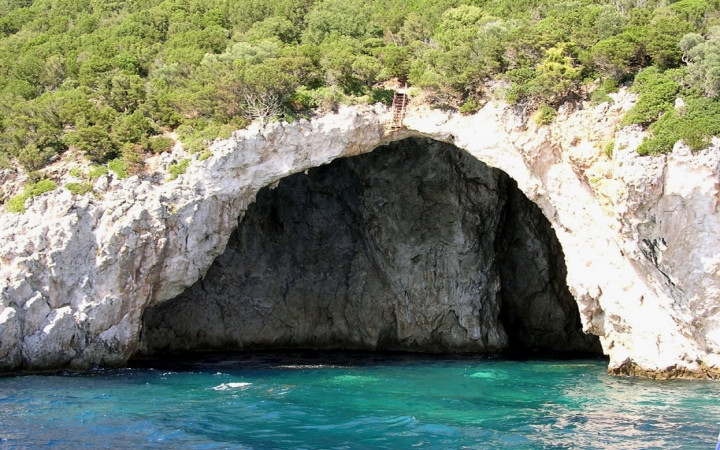Today’s Wonder of the Day was inspired by Dayanara. Dayanara Wonders, “How are caves formed?” Thanks for WONDERing with us, Dayanara!
Imagine this. It’s hundreds of years ago, and you’re hunting in the woods of what is now the eastern part of Kentucky. You see a bear and begin to track it. You follow it through dense groves of trees, across fields, and up and down hills.
Then, it’s nowhere to be found. It seems to have disappeared. Where could it have gone? You follow its tracks and soon discover something more incredible than a wild bear. It’s a huge opening into the ground. What is it? A cave entrance!
That may have been exactly how the world’s longest cave system—known as Mammoth Cave—was discovered. Today, geologists know that Mammoth Cave stretches almost 400 miles with parts yet unexplored!
Kentucky is a great place to visit caves. Did you know there’s a special word for the practice of exploring caves? It’s called spelunking! Isn’t that a funny word? Would you like to be a spelunker?
Of course, there are plenty of other great places for spelunking in the U.S. Two of these are Tennessee and Missouri. Tennessee has almost 10,000 caves and Missouri has over 6,000. Around the world, you can find millions.
Have you ever WONDERed how caves form? They tend to be found in areas with limestone or dolomite rock and underground streams. Scientists call these karst areas. When it rains in karst areas, water seeps through cracks in the rock. Then, it combines with carbon dioxide to form a weak form of acid.
Over long, long periods of time (sometimes millions of years), this acid eats away at the rock and forms hollow areas. These hollow areas become bigger and join together over time to form caves.
Of course, caves can form in other ways, too. Along coastlines, the constant force of waves crashing against the base of a cliff can erode soft rock and form sea caves. Special caves called lava tubes can form when the edge of a lava flow cools faster than the center, forming a crust over the top in the shape of a tube. Caves can also show up in areas where bacteria feed off oil deposits to produce a gas that combines with oxygen to form a strong acid that eats away rock.
If you decide to go spelunking, you might want to bring a jacket with you. Caves can be cool inside. How cool? That depends upon where the cave is located. The temperature in caves tends to stay the same year-round, because they’re underground and not affected by surface weather patterns.
The temperature of a cave is usually close to the average annual temperature for the region where it’s located. For example, caves in Texas can be as warm as 70º F. Caves in Missouri might be between 55º F and 60º F. Caves in Wisconsin might be a chilly 50º F. Brrr! Wherever you go spelunking, do your own research and be prepared!
Standards: CCRA.L.3, CCRA.L.6, CCRA.R.1, CCRA.R.2, CCRA.R.4, CCRA.R.10, CCRA.SL.1, CCRA.W.2, CCRA.W.7, CCRA.W.9, CCRA.L.1, CCRA.L.2




